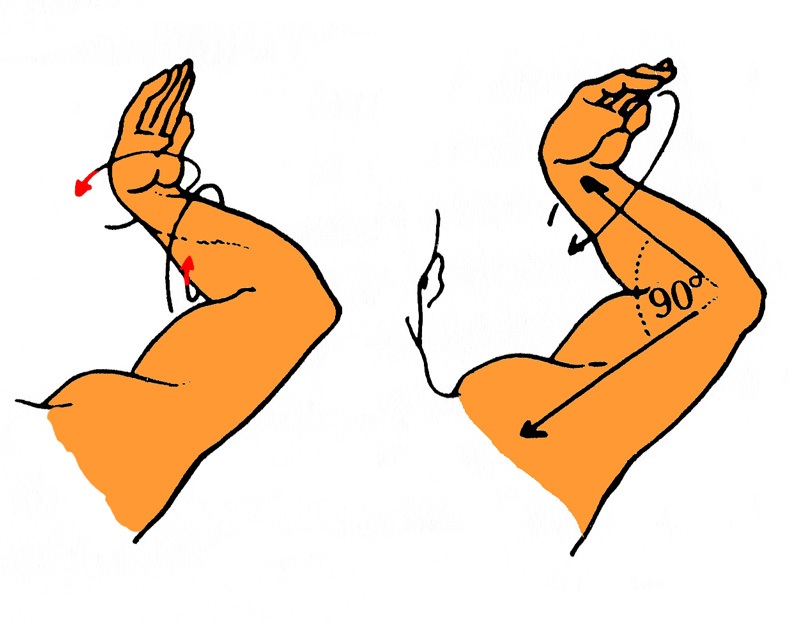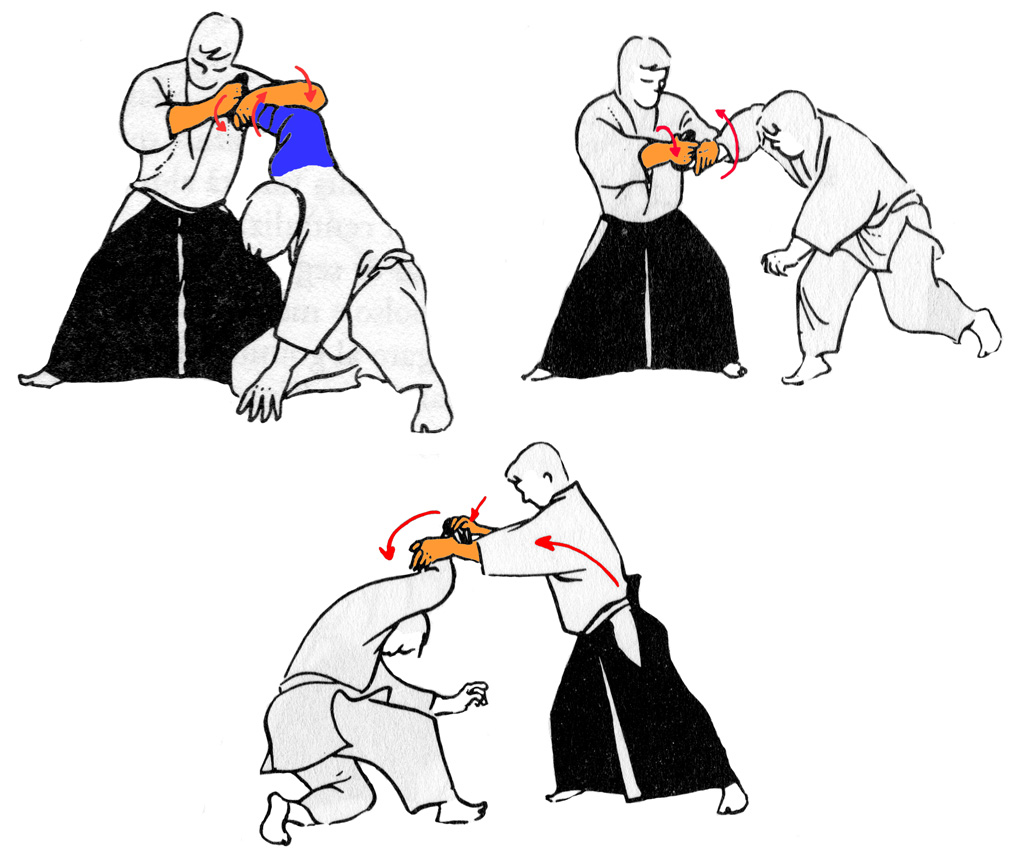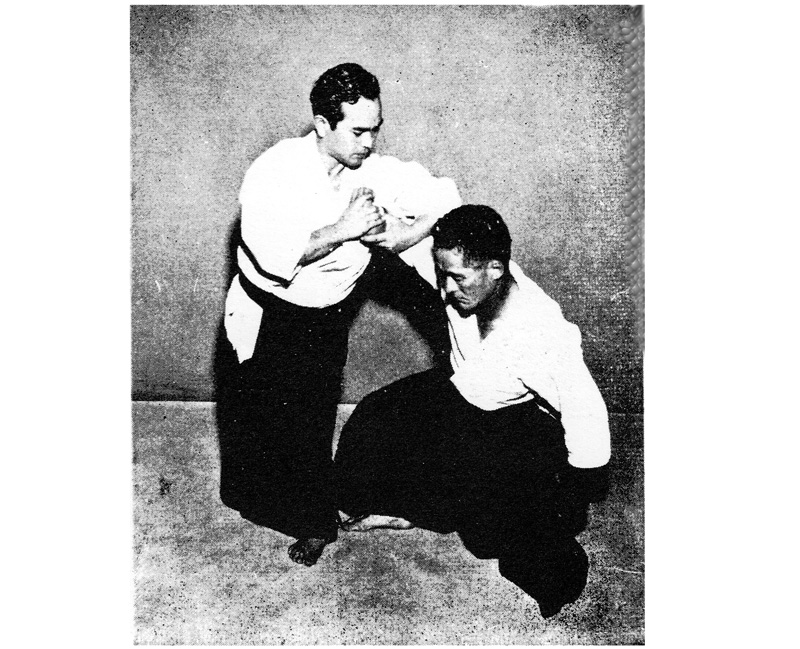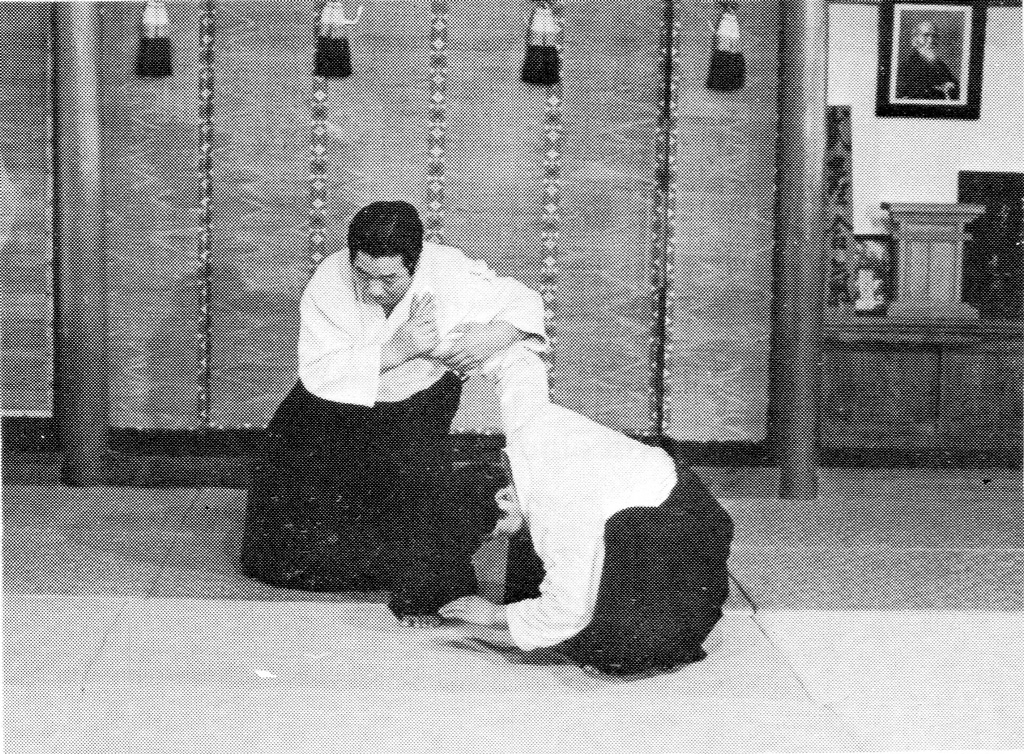| Nikyo is not an easy technique. Some questions were asked about this technique during the trainings in Balerna and at the last seminars. That's why I've put together some information here. Below are quotes from Ratti & Westbrook, by Tohei, by Saito and by Yoshigasaki, who explain nikyo. It is worth trying out the different aspects on the mat and developing your own explanations. With a lot of practice, we can certainly master the complex technique of nikyo. |
Nikyo
Taken from: Ratti & Westbrook, Aikido and the dynamic sphere, 1967
"This immobilization is known as nikyo or kote mawashi (wrist twisted outwards) and represents one of the most powerful techniques in the practical repertoire of Aikido, capable of forcing even the strongest people to their knees if applied correctly.
Its functional characteristics consist of a typically twisted position of the opponent's forearm, wrist and hand, which causes intense pain. In fact, while the forearm bent at the elbow is forced to rotate downwards and outwards, the hand is led to rotate inwards, in the opposite direction. The resulting physical pain is concentrated in the wrist and shoulder of the captured arm. The aggressive energy is then twisted on itself in a closed and painful circuit."





